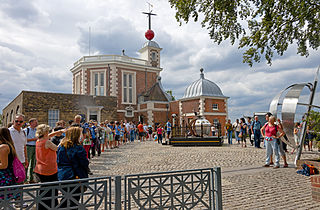
Greenwich Mean Time (GMT) is the mean solar time at the Royal Observatory in Greenwich, London, counted from midnight. At different times in the past, it has been calculated in different ways, including being calculated from noon; as a consequence, it cannot be used to specify a particular time unless a context is given. The term GMT is also used as one of the names for the time zone UTC+00:00 and, in UK law, is the basis for civil time in the United Kingdom.

The Royal Observatory, Greenwich is an observatory situated on a hill in Greenwich Park in south east London, overlooking the River Thames to the north. It played a major role in the history of astronomy and navigation, and because the Prime Meridian passes through it, it gave its name to Greenwich Mean Time, the precursor to today's Coordinated Universal Time (UTC). The ROG has the IAU observatory code of 000, the first in the list. ROG, the National Maritime Museum, the Queen's House and the clipper ship Cutty Sark are collectively designated Royal Museums Greenwich.
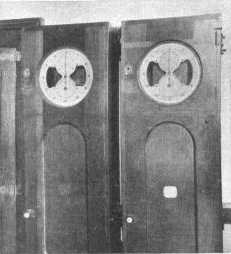
A time signal is a visible, audible, mechanical, or electronic signal used as a reference to determine the time of day.

A speaking clock or talking clock is a live or recorded human voice service, usually accessed by telephone, that gives the correct time. The first telephone speaking clock service was introduced in France, in association with the Paris Observatory, on 14 February 1933.

A time ball or timeball is a time-signalling device. It consists of a large, painted wooden or metal ball that is dropped at a predetermined time, principally to enable navigators aboard ships offshore to verify the setting of their marine chronometers. Accurate timekeeping is essential to the determination of longitude at sea.
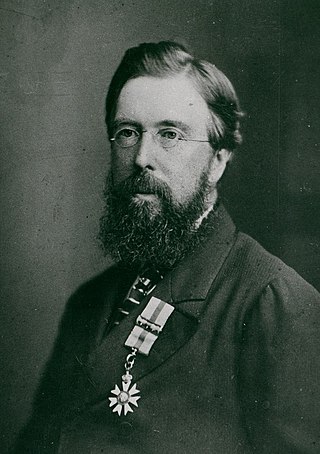
Sir Charles Todd worked at the Royal Greenwich Observatory 1841–1847 and the Cambridge University observatory from 1847 to 1854. He then worked on telegraphy and undersea cables until engaged by the government of South Australia as astronomical and meteorological observer, and head of the electric telegraph department.

Hong Kong Time is the time in Hong Kong, observed at UTC+08:00 all year round. The Hong Kong Observatory is the official timekeeper of the Hong Kong Time. It is indicated as Asia/Hong_Kong in the IANA time zone database.

A clock network or clock system is a set of synchronized clocks designed to always show exactly the same time by communicating with each other. Clock networks usually consist of a central master clock kept in sync with an official time source, and one or more slave clocks which receive and display the time from the master.
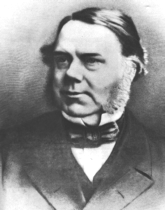
Charles Frodsham was a distinguished English horologist, establishing the firm of Charles Frodsham & Co, which remains in existence as the longest continuously trading firm of chronometer manufacturers in the world. In January 2018, the firm launched a new chronometer wristwatch, after sixteen years in development. It is the first watch to use the George Daniels double-impulse escapement.

Edward John Dent (1790–1853) was a famous English watchmaker noted for his highly accurate clocks and marine chronometers.

The Deal Timeball is a Victorian maritime Greenwich Mean Time signal located on the roof of a waterfront four-storey tower in the coastal town of Deal, in Kent, England. It was established in 1855 by the Astronomer Royal George Biddell Airy in collaboration with Charles V. Walker, superintendent of telegraphs for the South Eastern Railway Company. It was built by the Lambeth firm of engineers Maudslay and Field. The time ball, which, like the Greenwich time ball, fell at 1 pm precisely, and was triggered by an electric signal directly from the Royal Observatory.

A master clock is a precision clock that provides timing signals to synchronise slave clocks as part of a clock network. Networks of electric clocks connected by wires to a precision master pendulum clock began to be used in institutions like factories, offices, and schools around 1900. Modern radio clocks are synchronised by radio signals or Internet connections to a worldwide time system called Coordinated Universal Time (UTC), which is governed by primary reference atomic clocks in many countries.

A marine chronometer is a precision timepiece that is carried on a ship and employed in the determination of the ship's position by celestial navigation. It is used to determine longitude by comparing Greenwich Mean Time (GMT), and the time at the current location found from observations of celestial bodies. When first developed in the 18th century, it was a major technical achievement, as accurate knowledge of the time over a long sea voyage was vital for effective navigation, lacking electronic or communications aids. The first true chronometer was the life work of one man, John Harrison, spanning 31 years of persistent experimentation and testing that revolutionized naval navigation.
Charles Vincent Walker FRS was an English electrical engineer and publisher, a major influence on the development of railway telecommunications, he was also the first person to send a submarine telegraph signal.
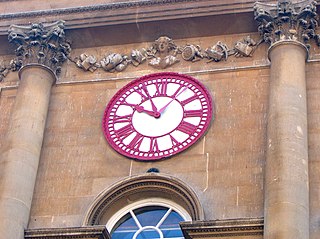
Railway time was the standardised time arrangement first applied by the Great Western Railway in England in November 1840, the first recorded occasion when different local mean times were synchronised and a single standard time applied. The key goals behind introducing railway time were to overcome the confusion caused by having non-uniform local times in each town and station stop along the expanding railway network and to reduce the incidence of accidents and near misses, which were becoming more frequent as the number of train journeys increased.
Dent was a London manufacturer of luxury clocks and watches, founded by Edward John Dent. Dent began making watches in 1814, although the Dent triangular trade mark was not registered until 1876. A notable success for the company was winning the contract to make the clock for the new palace of Westminster, which became known as Big Ben.
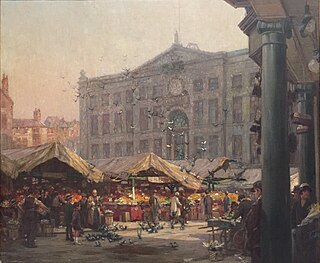
Nottingham Exchange was built in the Market Place in Nottingham between 1724 and 1726 as the main offices of the Nottingham Corporation.
David Robertson was the first Professor of Electrical Engineering at Bristol University. Robertson had wide interests and one of these was horology – he wanted to provide the foundation of what we could call “horological engineering”, that is, a firm science-based approach to the design of accurate mechanical clocks. He contributed a long series on the scientific foundations of precision clocks to the Horological Journal which was the main publication for the trade in the UK; he and his students undertook research on clocks and pendulums ; and he designed at least one notable clock, to keep University time and control the chiming of Great George in the Wills Memorial Building from its inauguration on 1925, for which he also designed the chiming mechanism.
The Port Chalmers time ball is a Victorian maritime Greenwich Mean Time signal located on Aurora Terrace on top of Observation Point in the port of Port Chalmers, New Zealand. It was established in 1867 by the Otago Provincial Council. The time ball fell precisely at 1 p.m. daily. Originally triggered by a grandfather clock, from 1882 onwards a telegraph signal from Wellington took over this function. It was removed in 1970, but a replacement was restored to service in 2020.






